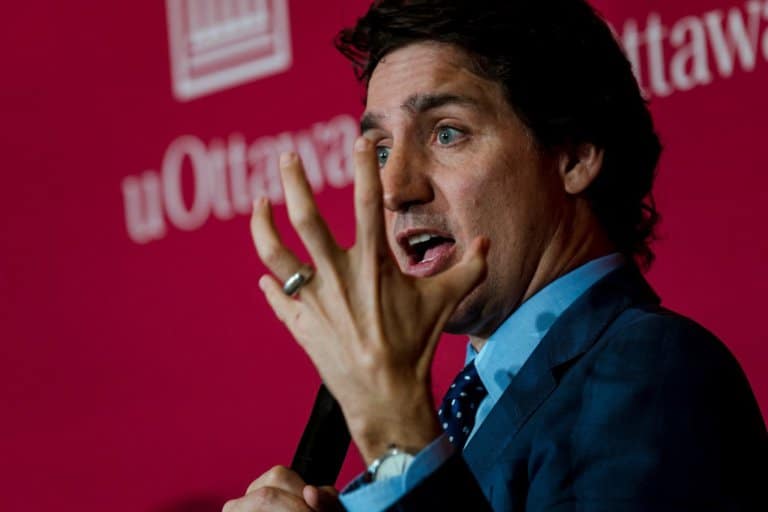
The Canadian housing crisis is about to reach a tipping point as the government is considering a first-ever cap on international students as a way to solve its housing affordability issue.
Canadian Housing Minister Sean Fraser says this limit was “one of the options that we ought to consider,” BBC reports.
His remarks come as Prime Minister Justin Trudeau faces growing criticism for failing to solve the housing crisis.
Many universities rejected this idea swiftly, saying that tying international students to the country’s housing crisis is “deeply concerning.”
Canadian MP Jagmeet Singh also criticised Trudeau for blaming international students.
“Justin Trudeau’s housing crisis has left students struggling to find a home. Instead of blaming students, we must implement immediate solutions,” Singh, leader of Canada’s New Democratic Party, wrote on X.
Just last year, the country set an ambitious target of welcoming 1.5 million new immigrants by 2025 — students are a key group it recognises for bringing “tremendous economic, cultural and social benefits” to the country.
This year, Canada’s Immigration Minister Marc Miller recently told CBC the country is on track to host around 900,000 international students this year.
Miller has also responded to BBC that the government would take a look at its immigration target to determine whether it has an impact on the Canadian housing crisis.
As current or future international students of Canada, this news might have a strong impact on your time in Canada — making it all the more important to stay updated with the latest developments in this area.
Let’s start by looking at the state of the Canadian housing market. How bad is it that the government is willing to consider such a drastic measure?
Why is there a Canadian housing crisis?
Many Canadians struggle to pay rent and mortgage.
As of August, the average home price in the country was around 750,000 Canadian dollars (around US$556,000 at the time of writing) — an increase of 360% from 2000, when the average was CA$163,000.
For international students, an increase in rent poses an extra barrier to securing affordable housing off-campus.
Thirty-year-old biomedical engineering graduate Amin Kamaleddinezabadi, who completed his PhD at the University of Toronto, shares that foreign students are sometimes required to pay six months worth of rent in advance since they don’t have a credit record in the country.
Rental prices have only increased since he began his studies, according to the Iranian graduate.
“Most international students rely on their own funding, and with the higher tuition fees they pay, it can be a really big burden for them financially,” Kamaleddinezabadi told BBC.
University Living, a global student housing marketplace, wrote on LinkedIn that the skyrocketing costs have forced students into “costly commutes and even hotels”, burdening their already tight budgets.
One report revealed that 25 students resorted to sleeping in tents on the side of the road. From a college in Ontario, these students spoke to local media about having to pay tuition of around CA$14,000 and housing costs ranging between CA$700 to CA$1,600 a month.

Official data from the Canadian Bureau for International Education showed more than 800,000 international students had active student visas in 2022, up from 275,000 in 2012. Source: AFP
Will limiting the number of international students help solve the Canadian housing crisis?
The number of international students in Canada has risen over the years.
In 2022, the Canadian Bureau for International Education recorded about 807,750 international students in the country — a 43% increase from five years ago.
While the influx of international students may make them an easy target for politicians, immigrants, international students, and temporary workers should not be considered as the cause of Canada’s housing crisis. Here’s why:

Aerial picture view of snow in downtown Montreal, Quebec. Source: AFP
1. International students make up just 2% of Canada population
At the time of writing, Canada had a population of 38,854,428.
Meanwhile, there are about 800,00 international students in Canada, making up about 2% of Canada’s population.
Rachel Dancel, a video creator based in Vancouver and international graduate from the Philippines, shares that students typically opt for shared accommodation, live on campus, or even choose homestays.
“Housing prices are currently skyrocketing because many people want homes, but there aren’t enough available,” she says.
“Therefore, even if efforts are made to reduce the number of international students by half, it would only account for about 1% of the population. This wouldn’t create more homes or make existing homes more affordable.”
There are other factors that have an impact on this housing crisis, including interest rates, foreign investors purchasing multiple properties for quick profits, inflation, government policies, a shortage of construction workers, and more.
Damanpreet Singh, the international student representative for Canada’s national student union, the Canadian Federation of Students, says: “A cap will not eliminate inflation, luxury housing, gentrification, housing scams, and many other factors that affect Canadians and non-Canadians who are trying to find a home,” Singh says.

Canada’s nationwide rental and housing crisis has resulted in major cities like Toronto and Vancouver becoming increasingly unlivable for students and low-income earners. Source: AFP
2. International students are a huge source of income for the Canadian economy
Universities Canada firmly opposes the imposition of restrictions on the admission of international students.
This stance primarily stems from the fact that Canadian universities heavily rely on international students as a substantial source of their revenue.
Fay Faraday, a law professor at Osgoode Hall Law School and immigration law expert, says: “The international student population is critical to the functioning of the university because the fees that they pay, which are significantly above domestic fees, fill the gap in the underfunding for the public education system and secondary public education system.”
According to Statistics Canada, the gulf between domestic and international fees is significant.
In the academic year 2022-23, the average Canadian domestic student paid CA$6,834 in tuition fees, while in stark contrast, the average international student paid a tuition burden almost six times greater, amounting to CA$36,123.
In fact, last year, Canada reported that international students contributed CA$22.3 billion to the country’s economy and the country has heavily depended on immigration to address various labor-sector shortages.

Benoit Mainville grabs coffee pods while cooling down at the Old Brewery Mission, a homeless shelter, during a heatwave in Montreal, Quebec, Canada, on June 1, 2023. Source: AFP
3. International students bring diversity to campuses
International students bring important knowledge, diversity and skills to campuses, communities and workforce.
“While housing concerns are valid, let’s remember that any student, international or domestic, is a victim of housing affordability challenges. International students enrich our campuses and communities. They bring diverse perspectives, cultures, and talents that contribute to our education system and economy,” Meti Basiri, CEO and co-Founder of ApplyBoard, writes in a LinkedIn post.
He emphasises the focus should remain on enhancing the integrity of Canada’s immigration system, intentionally addressing fraud, and collaborating with provincial governments to spark innovative solutions.

One criteria in the Immigration, Refugees and Citizenship Canada’s proposed Trusted Institution Framework is the availability of DLI-administered housing for international students. Source: AFP
“Trusted institution” framework to encourage Canadian universities tackle the Canadian housing crisis
Immigration, Refugees and Citizenship Canada is exploring a two-tier model for issuing study permits as a way to strengthen the integrity of Canada’s international students programme, as reported by the ICEF.
Dubbed the “Trusted Institution framework”, this is one way to draw Canadian colleges and unis to play a part in tackling the housing affordability crisis.
Designated learning institutions (colleges, unis, and other educational institutions authorised by Canada’s provincial and territorial governments to admit international students) that meet IRCC’s Trusted Institutions Framework criteria would benefit from faster study permit processing for international students admitted to their institutions.
While details remain scarce, CIC News has revealed the contents of the proposed indicators that IRCC plans to use to assess whether a DLI is a Trusted Institution.
Among others, one of the indicators will assess the total number and percentage of international students living in housing administered by their institution.
“Some pathways being discussed include expanding on-campus living or even working with private businesses to create dedicated student housing,” Rachel Dancel, a video creator based in Vancouver and international graduate from the Philippines, explains on YouTube Shorts.
IRCC will start collecting and analysing data from all DLIs in the coming months and establish the initial list of Trusted Institutions in spring 2024, CIC News reports.







